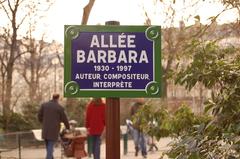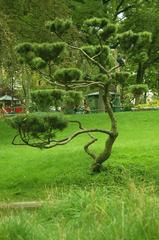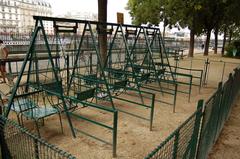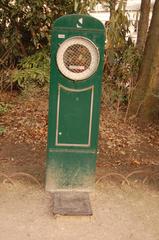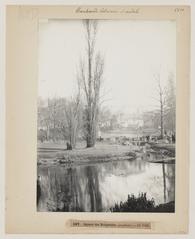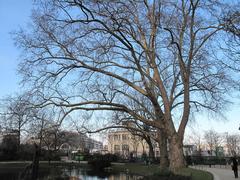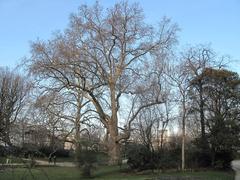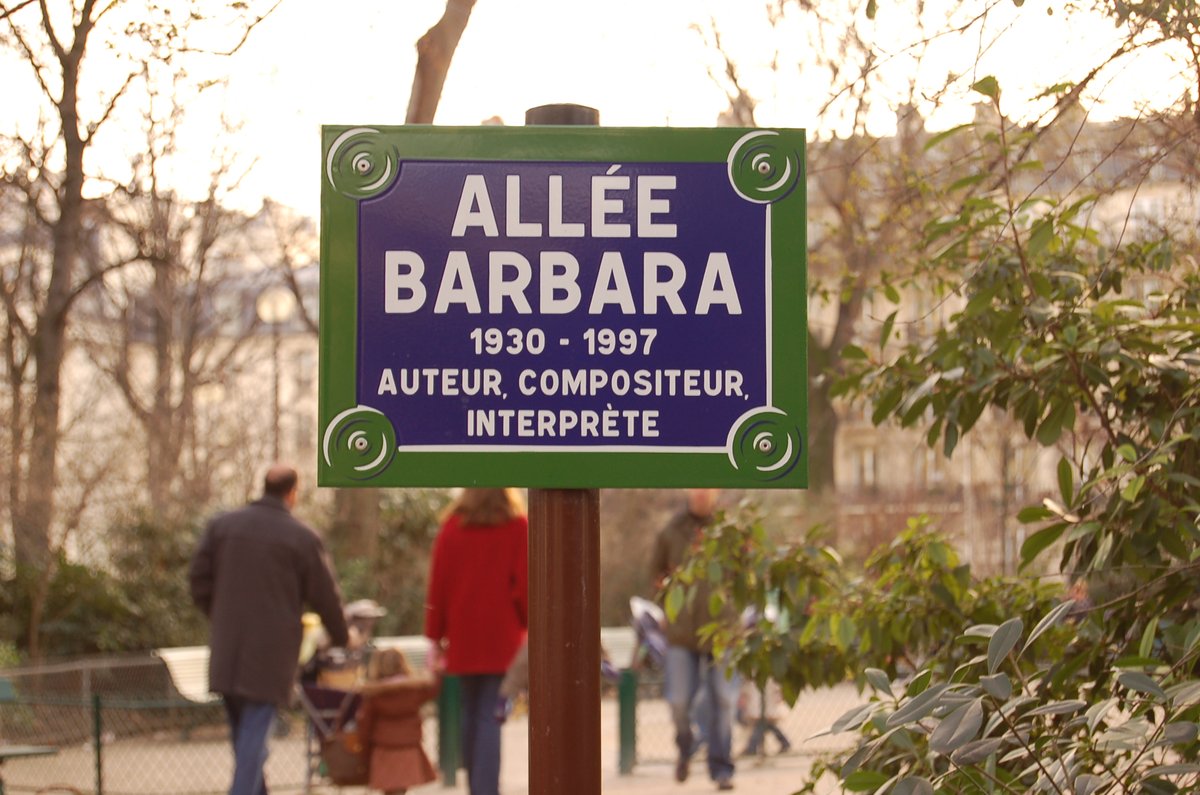
Square des Batignolles: Visiting Hours, Tickets, and Guide to Paris’s Historic 17th Arrondissement Oasis
Date: 14/06/2025
Introduction
Square des Batignolles, a tranquil historic park in Paris’s 17th arrondissement, stands as a testament to the city’s Second Empire-era dedication to integrating green spaces into urban life. Designed in 1862 by Jean-Charles Alphand as part of Baron Haussmann’s ambitious city transformation, the park is an English landscape-style retreat featuring meandering paths, mature trees, a picturesque pond, and a welcoming atmosphere for both locals and travelers. This guide provides a comprehensive overview of Square des Batignolles, including its historical significance, architectural and botanical features, visitor information, and nearby attractions, ensuring you make the most of your visit to this Parisian gem (Wikipedia, Paris La Douce, Paris Trippers, France Hotel Guide).
Table of Contents
- Historical Background and Urban Development
- Design and Architectural Features
- Botanical Diversity and Park Layout
- Social and Cultural Significance
- Artistic Details and Decorative Elements
- Visitor Information
- Travel Tips
- Nearby Attractions and Batignolles Highlights
- Frequently Asked Questions (FAQ)
- Conclusion
- References
Historical Background and Urban Development
Square des Batignolles was established in 1862, during Paris’s Second Empire under Baron Haussmann’s sweeping urban reforms. The Batignolles district, formerly agricultural land, was annexed to Paris in 1860 and soon transformed through Haussmann’s vision of a modern, livable city. The park’s name possibly derives from the Latin “batillus” (mill) or Provençal “bastidiole” (small farmhouse), reflecting its rural origins (Carnet des Capades). Square des Batignolles was conceived as a democratic green space for all residents, embodying the era’s philosophy of leisure and public health (Wikipedia).
Design and Architectural Features
The park’s design, overseen by Jean-Charles Alphand with contributions from engineer Jean Darcel, architect Gabriel Davioud, and horticulturist Jean-Pierre Barillet-Deschamps, reflects the English landscape garden style popular in mid-19th-century France (Wikipedia). Unlike the formal symmetry of traditional French gardens, Square des Batignolles features undulating lawns, winding paths, a stream fed by the Seine, a pond, a grotto, and a cascading waterfall. Stone bridges and ornamental rock formations lend a romantic, naturalistic feel to the landscape (Paris La Douce).
Covering approximately 1.7 hectares, the park is the largest green space in the arrondissement and is divided into distinct sub-gardens, each with unique character connected by meandering gravel paths (Paris Trippers).
Botanical Diversity and Park Layout
Square des Batignolles showcases a diverse selection of mature trees, including century-old Oriental plane trees, chestnuts, Siberian elms, Japanese cherry trees, willows, black walnuts, and a young giant sequoia. A glass-walled gazebo atop a rocky outcrop houses a tropical palm, an exotic touch reflecting 19th-century horticultural ambition (Wikipedia). Seasonal flowerbeds display vibrant tulips, roses, and hydrangeas during spring and summer, while autumn brings rich, colorful foliage (Islands).
Wildlife such as ducks, swans, squirrels, and songbirds thrive in the park’s pond and leafy groves. The main entrance is on Rue des Batignolles, with multiple access points on surrounding streets.
Social and Cultural Significance
Designed as a space for all classes, Square des Batignolles quickly became a neighborhood hub. Its democratic spirit persists, with the park serving as a gathering place for pétanque players, joggers, families, and picnickers (Paris La Douce). The park has inspired French artists and writers and is referenced in songs such as Barbara’s “Perlimpinpin” and Yves Duteil’s “Les Batignolles” (Wikipedia). The surrounding Batignolles district, known as “a village in the city,” further enhances the area’s allure with its markets, cafés, and artistic heritage.
Artistic Details and Decorative Elements
Artistic highlights in the park include the “Vautours” (Vultures) statue by Louis de Monard (1930) at the pond’s center and a bust of poet Léon Dierx by Bony de Lavergne (1932). Decorative urns, wrought-iron railings, faux rock formations, and a classic cast-iron bandstand evoke the elegance of the Second Empire (I Prefer Paris, Paris La Douce).
Visitor Information
Opening Hours
- Winter: Opens at 8:00 AM on weekdays (9:00 AM weekends), closes at 5:45 PM.
- Summer: Opens at 7:30 AM, closes at 9:30 PM.
- Hours may vary in spring and autumn; always check the official Paris parks website before your visit.
Tickets and Admission
- Free Entry: No tickets are required for Square des Batignolles.
Accessibility
- The park is wheelchair and stroller accessible, with paved, gently sloping paths and step-free entrances. Benches are plentiful throughout.
Amenities
- Well-equipped children’s playground with swings, slides, and climbing frames.
- Public restrooms and seasonal drinking fountains (note: facilities can be limited).
- No cafés within the park, but numerous bakeries and restaurants are nearby on Rue des Batignolles and adjacent streets (Paris Trippers).
Guided Tours and Events
- Occasional guided tours focus on the park’s horticulture and history; check with local tourism offices or tour companies.
- The park hosts occasional small concerts and community gatherings, especially in summer (Paris Rental).
Photography Spots
- Popular locations for photos include the pond, stone bridges, palm gazebo, and statues. Early morning and late afternoon offer the best natural light.
Travel Tips
- Getting There:
- Metro: Brochant (Line 13), Rome (Line 2), Place de Clichy (Lines 2 and 13).
- Buses: Several lines serve Boulevard des Batignolles and Rue Cardinet.
- Gare Saint-Lazare train station is nearby.
- Bike-sharing stations are available throughout the neighborhood (TripSavvy).
- Best Time to Visit:
- Spring and autumn for blooms and foliage, mornings for tranquility, weekends for lively local life.
- Picnic:
- Bring supplies from nearby markets or bakeries; picnicking on lawns is welcome.
- Park Rules:
- Dogs must be leashed and are only allowed in certain alleys; check entrance signage.
- Alcohol is officially prohibited, but discreet picnics are common.
- Respect quietness; ball games and loud music are discouraged.
Nearby Attractions and Batignolles Highlights
- Parc Clichy-Batignolles – Martin Luther King:
- Modern park with sustainable landscaping and sports facilities, a short walk away.
- Batignolles Market:
- Covered market (Tuesdays, Fridays, Sundays, 7:00 AM–2:00 PM) and organic market (Saturdays, 8:00 AM–2:00 PM) with fresh produce and local specialties (Come to Paris).
- Historic Batignolles Neighborhood:
- Explore cobblestone streets, independent boutiques, and cafés.
- Visit Sainte-Marie des Batignolles church at Place du Docteur Félix Lobligeois.
- Cultural Venues:
- Le Bal (photography and art exhibitions), and historic bars such as Le Cyrano.
Frequently Asked Questions (FAQ)
Q: What are the opening hours of Square des Batignolles?
A: Typically 8:00 AM–5:45 PM in winter, 7:30 AM–9:30 PM in summer; check official hours for seasonal changes.
Q: Is there an entry fee?
A: No, admission is free.
Q: Is the park accessible for wheelchairs and strollers?
A: Yes, paths are paved and entrances are step-free.
Q: Are dogs allowed?
A: Yes, but only on leashes and in designated areas.
Q: Are guided tours available?
A: Occasionally; check with local tourism offices or tour companies.
Q: Are there public restrooms?
A: Yes, though facilities are limited.
Conclusion
Square des Batignolles is a living symbol of Paris’s commitment to green urban spaces and community life. With its lush botanical variety, artistic heritage, and welcoming ambiance, it offers a peaceful retreat and a window into authentic Parisian culture. Whether you’re interested in history, horticulture, leisure, or simply enjoying a picnic among locals, Square des Batignolles and the vibrant Batignolles district invite you to explore a different side of Paris.
For the latest updates, guided audio tours, and more Paris travel inspiration, download the Audiala app and connect with us on social media.
